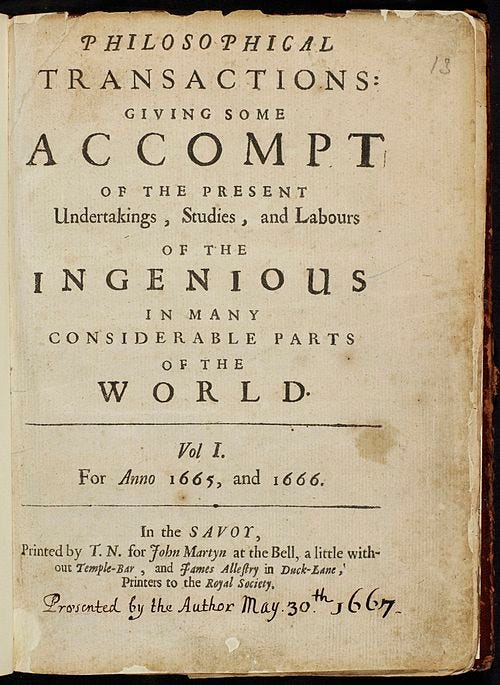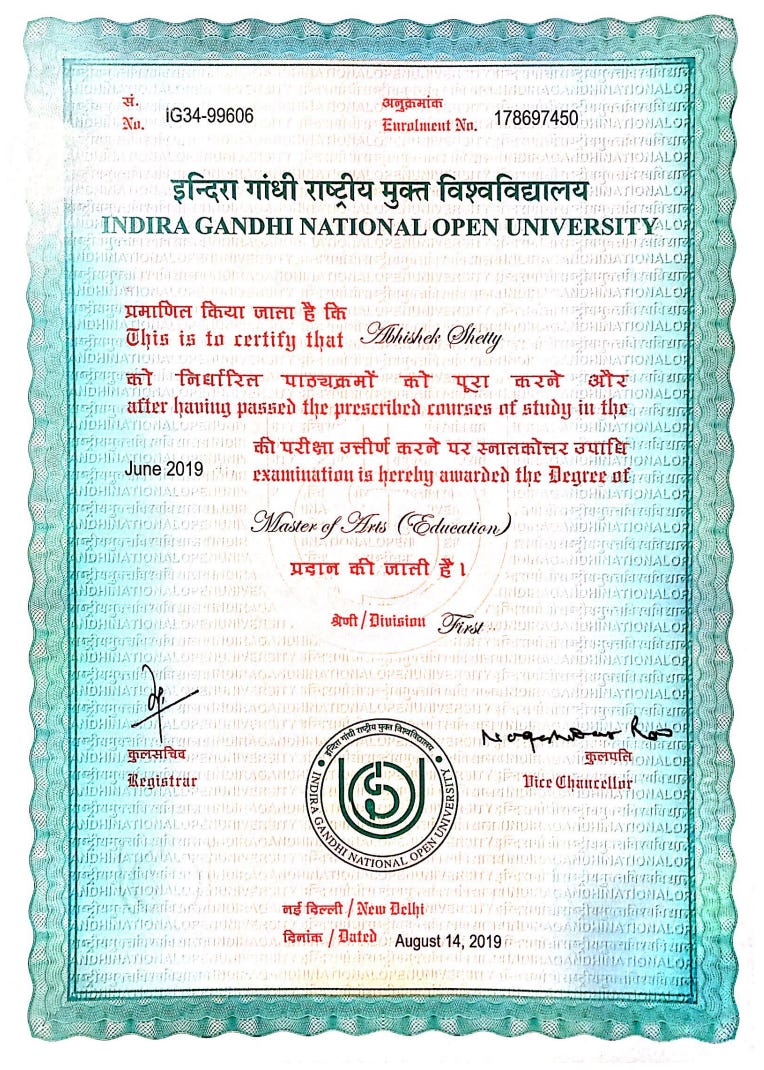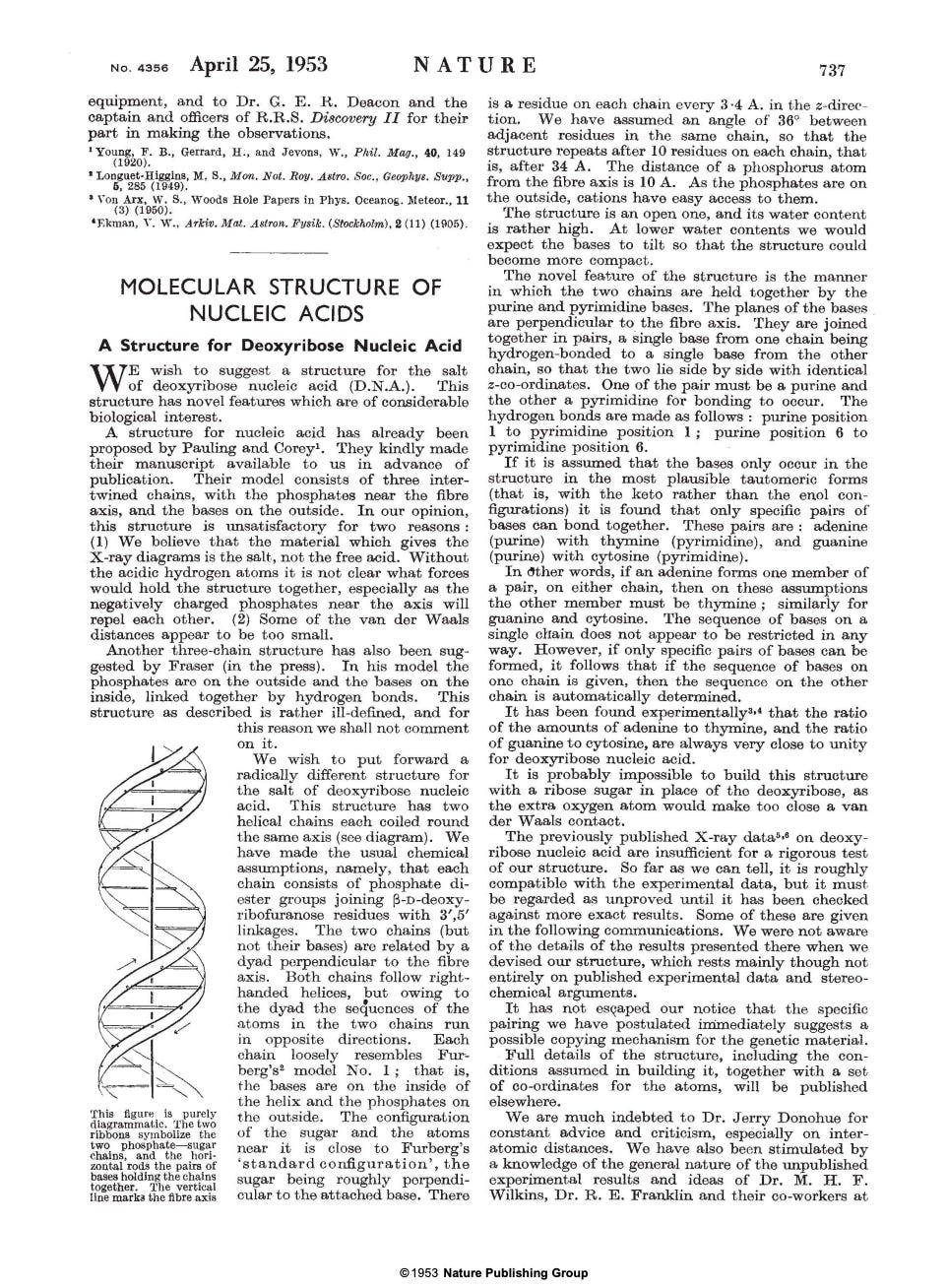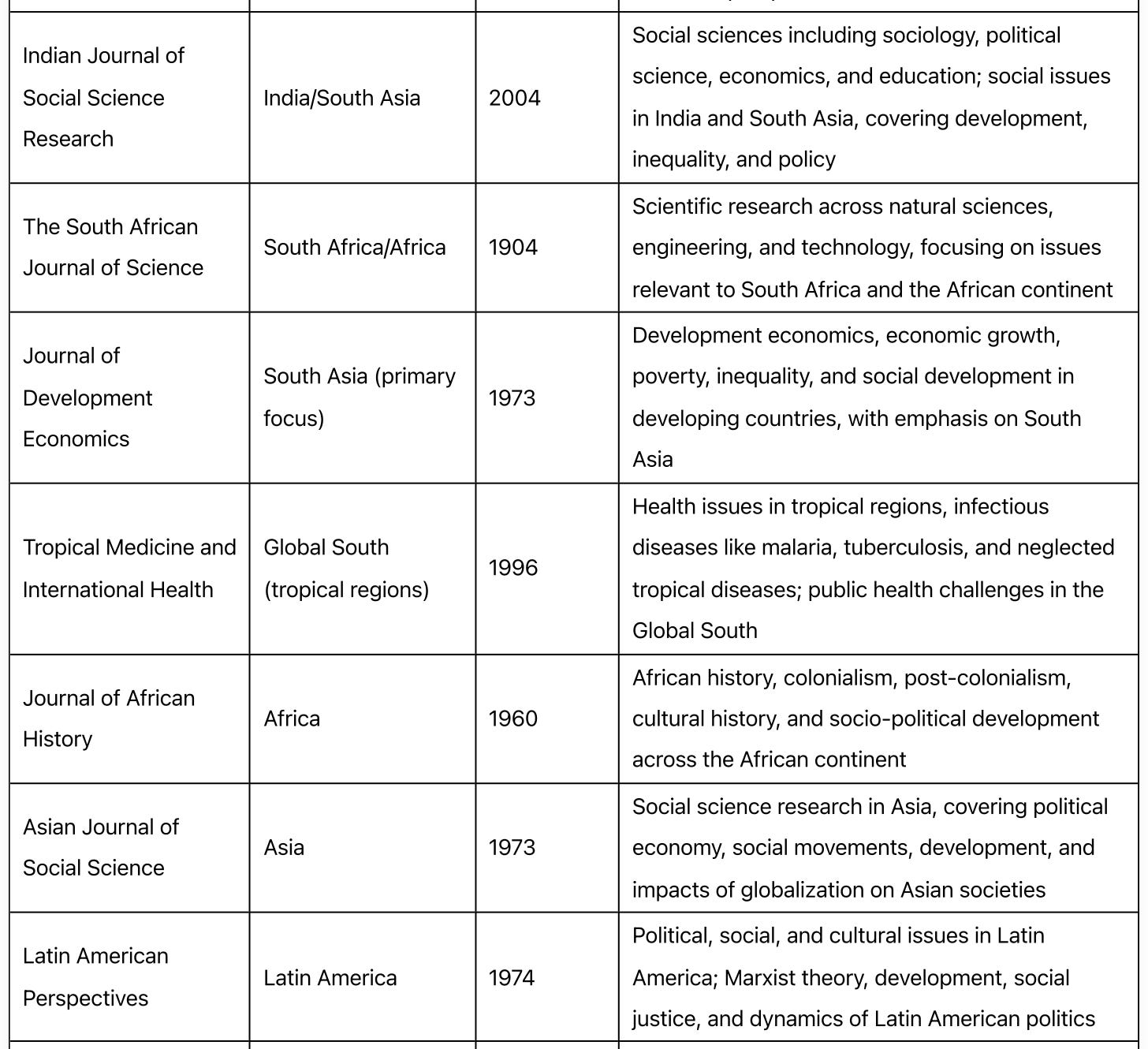In 1905, Albert Einstein at the age of 26 published four groundbreaking academic papers1. These papers included one on the photoelectric effect, which provided key evidence for quantum theory and later won him the Nobel Prize in Physics (1921); another one Brownian motion, confirming the atomic theory of matter; a third introducing special relativity, which redefined space and time; and a fourth presenting the famous equation E=mc², demonstrating the relationship between mass and energy. These papers laid the foundation for modern physics, influencing quantum mechanics, cosmology, and even the development of nuclear energy.
Humans like Albert Einstein have written academic papers to organize, preserve, and share knowledge in a clear, structured, and credible way since the 1600s.
However for the longest time knowledge was passed orally or through rare manuscripts. Access to this knowledge was limited to the cultural elite.
This changed with a few important inventions in the last 1000 years.
This included the invention of the University (12th century), the Printing Press and Printed Books (15th century), the Scientific Method, Academic Journals and Academic Papers (17th century), the Typewriter, Fax Machines and Postal Systems (18th and 19th century), the Computer, Radio, Television and Internet (20th century), the Website and Mobile Technology (late 20th century), the Search Engines, Social Media and Language Learning Model’s (early 21st century).
In this essay I would like to focus on the history of one such tool.
The Academic Paper. But…
Why do Academic Papers matter so much to me?
From 2017 to 2019, I pursued a Master’s Degree of Arts in Education Management from the Indira Gandhi National Open University.
My master’s thesis was a qualitative study that included an analysis of mission statements of CBSE Schools based on content analysis and interviews with school leaders. You can download the pdf of my final academic paper/thesis here.
It was during this course that I was first introduced to the power of academic papers as a research tool. I had to review several academic papers to write my final thesis on school mission statements.
This was a very specific study in a niche field. I was studying school mission statements as a subset of the subject area of education management within the larger discipline of education within the field of social sciences. Fortunately there were several other people that were interested in the same specific study in this niche field. I could build on their work and conduct research that would be relevant to educators in a local context. I could build on the shoulders of giants by reviewing other academic papers published on the same topic from across the world. But…
What is an Academic Paper?
The purpose of an academic paper is to communicate new knowledge or contribute to existing understanding within a specific field of study.
It allows researchers to present their findings, analysis, and interpretations in a structured, evidence-based manner, typically following a format that includes a clear research question, methodology, results, and discussion. These academic papers are normally published in academic journals.
Academic papers aim to advance scholarly discourse by presenting original ideas, theories, or experimental data that others in the field can critically assess, replicate, or build upon.
What was the first Academic Paper?
The first academic paper in the modern sense of a peer-reviewed scientific paper was published in 1665 in the journal Philosophical Transactions of the Royal Society. This is the world’s oldest scientific journal and one of the most prestigious in the field of scientific research. It was founded by Henry Oldenburg, the first secretary of the Royal Society of London. It was established to provide a platform for scientists to publish and share their experimental findings, fostering communication within the growing scientific community. The journal initially featured a broad range of topics in natural philosophy (early science), including astronomy, physics, and medicine, and introduced the idea of peer review, a process that became fundamental to academic publishing.


The first academic paper in the modern sense was titled “An Account of a Disease in the Eyes of a Gentleman” and was written by Thomas Sprat, a member of the Royal Society.
It was published in 1665 in the journal, Philosophical Transactions of the Royal Society. The paper was a case study describing a medical condition, marking a shift from informal communication to formal, peer-reviewed research. This paper set the foundation for the academic paper as a medium for scientific inquiry, establishing the format and purpose of academic publishing by documenting observations, presenting evidence, and contributing to the body of knowledge in an organized and verifiable way.
The author of the first academic paper was Thomas Sprat (seen below). He was an English churchman and writer and was the Bishop of Rochester from 1684. He was a priest that loved science.

But before that here are some notes on important academic papers and their relevance to those disciplines.
Molecular Structure of Nucleic Acids (1953) by James Watson & Francis Crick
This was in the field of Biology/Genetics. The paper2 described the double helix structure of DNA, paving the way for modern genetics, molecular biology, and biotechnology. You can read part of this paper here.
On Computable Numbers, with an Application to the Entscheidungsproblem (1936) by Alan Turing
This was in the field of Computer Science/Mathematics. This paper3 defined the concept of a "universal machine" (now called the Turing machine), laying the theoretical foundation for modern computing. You can read this paper here.
What is the structure of the Academic Paper?
An academic paper typically follows a structured format that helps organize research findings and communicate them effectively to readers. Here's the standard structure of an academic paper:
Title Page (Title of the paper, author names and affiliations, Date)
Abstract (Brief summary of typically 150-250 words)
Keywords (4-6 terms that help index and categorize the paper in databases)
Introduction (Research questions or hypotheses, Significance/rationale of the study, Brief overview of methodology)
Literature Review (Critical analysis of existing research, Identification of gaps in current knowledge, Theoretical framework)
Methodology/Methods (Research design, Participants/subjects/materials, Procedures and data collection, Analytical approaches, Ethical considerations, Limitations of the methods)
Results/Findings (Presentation of data and outcomes, Statistical analyses, Tables, figures, and graphs)
Discussion (Interpretation of results, Relationship to existing literature, Implications of findings)
Conclusion (Summary of key findings, Broader implications)
References/Bibliography (Complete list of all sources cited)
Appendices (Supplementary materials, Raw data, Survey instruments, Additional tables or figures)
This structure may vary slightly depending on the academic discipline, journal requirements, or specific type of paper (e.g., empirical study, theoretical paper, review article, case study). Different citation styles (APA, MLA, Chicago, IEEE, etc.) might also affect certain formatting elements. Here is an image that breaks this down further from the Sumy State University Library.
Why do we publish Academic Papers in Academic Journals?
We publish academic papers in academic journals to formally share new knowledge, research findings, or theories with the scholarly community in a credible, peer-reviewed, and archived format.
The five main benefits of publishing academic papers in academic journals include validation through peer review, knowledge dissemination, academic recognition, scholarly dialogue and a permanent record for future reference and use.
What are some examples of Academic Journals?
Here is a list of 30 important journals published between 1600 to 2025 with the date of first publication, country of publication and academic focus.
A lot of these journals have been published in the Global North (developed countries/former colonists). However this changed significantly with important journals being published in the Global South4 (developing countries/former colonies). Here is a list of 7 important journals published in the Global South between 1900 to 2025.
I would now like to explore some reasons why academic papers are the best tools we have to organize, preserve, and share knowledge in a clear, structured, and credible way. But before that here are some notes on some other important academic papers and their relevance to those disciplines.
Experiments on Plant Hybridization (1866) by Gregor Mendel
This was in the field of Genetics. This paper5 established the basic laws of inheritance using pea plants. It was rediscovered in the early 20th century and became the foundation of classical genetics. You can read this paper here.
An Essay on the Principle of Population (1798) by Thomas Malthus
This was in the field of Economics/Demography. This paper6 argued that population growth would always outpace food production, influencing Charles Darwin and economic theory on resource scarcity. You can read this paper here.
10 Reasons that Academic Papers are the most powerful tools to organize, preserve, and share knowledge in a clear, structured, and credible way
Structured and Standardization Presentation - Academic Papers have a fixed format and this allows you to evaluate the methodology adopted and the results shared.
Peer Review Methodology - Academic Papers are evaluated by independent experts (peers) in the same field of study with a goal to identify any flaws, errors, or gaps in the research before it is published.
Evidence-Based Information - Academic Papers have to use prior research in a systematic and transparent way to inform a new study so that it is answering questions that matter in a valid, efficient, and accessible manner.
Comprehensive Record - Academic Papers normally include a literature review where the researcher summarizes the research conducted on that topic at the start of the paper.
Citation and References - Academic Papers include a list of all the papers used and referenced to conduct the specific study. This is normally included as a list at the end of the paper. This allows researchers to access all the primary sources when they conduct a study on the same topic in the future. Citations also give credit to prior work, which preserves the intellectual history of a field.
Permanent Record - Academic papers become part of a permanent record in academic journals, databases, and libraries.
Broad Dissemination - Academic Papers are normally accessible to all interested researchers through university libraries and academic databases.
Reproducibility - Academic papers allow others to reproduce experiments or methodology, which is a cornerstone of scientific knowledge by clearly outlining methods, data and results.
Focus on Knowledge Advancement - Academic papers often focus on adding new insights to existing bodies of knowledge.
Accessibility and Searchability - Academic Papers are easy to access and searchable in digital and physical databases.
I truly believe academic papers are one of the most powerful tools humans have built to organize, preserve, and share knowledge in a clear, structured, and credible way. I highly recommend using this tool to understand and create knowledge in your chosen discipline or area of expertise.
Thank you for reading this essay on academic papers.
Until Next Time,
Keep Learning.
Abhishek Shetty
Einstein’s Annus Mirabilis papers. Article Link - https://en.wikipedia.org/wiki/Annus_mirabilis_papers
WATSON, J., CRICK, F. Molecular Structure of Nucleic Acids: A Structure for Deoxyribose Nucleic Acid. Nature 171, 737–738 (1953). https://doi.org/10.1038/171737a0
Turing, A. M. (1936). On computable numbers, with an application to the Entscheidungsproblem. Proceedings of the London Mathematical Society, 2(42), 230–265. https://doi.org/10.1112/plms/s2-42.1.230
Kenny, M. (2025, May 2). Global North and Global South. Encyclopedia Britannica. https://www.britannica.com/topic/Global-North-and-Global-South
Abbott S, Fairbanks DJ. Experiments on Plant Hybrids by Gregor Mendel. Genetics. 2016 Oct;204(2):407-422. doi: 10.1534/genetics.116.195198. PMID: 27729492; PMCID: PMC5068836.
Malthus, T. An Essay on the Principle of Population. Accessed on May 2025 from https://oll.libertyfund.org/titles/malthus-an-essay-on-the-principle-of-population-1798-1st-ed














This makes me rethink my thoughts on research papers and their impact especially in humanities.